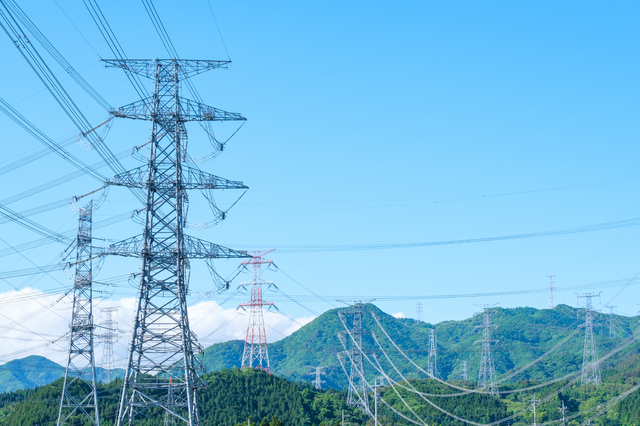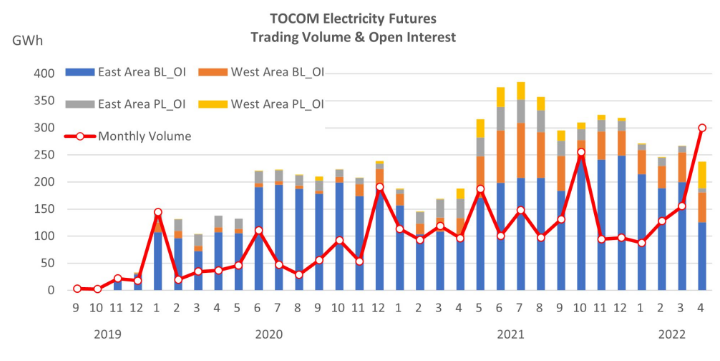TOCOM Energy
JPX Energy Market Updates(Sep. 26, 2022)
Crude futures Friday were in sharp retreat as oil markets headed for a fourth straight week of losses, with stumbling economic growth seen hitting oil demand.
Middle East benchmark Dubai crude was slightly lower on the week, and holds above Brent, Nov Brent/Dubai EFS was over $1/b down on the week, trading at around $4.65 /b on Friday's Asia close. However, the Dubai prompt market structure also weakened with the key M1/M3 spread falling $1.30/b on the week, while the one-year curve was down $0.75/b.
Crude markets had struggled to recover from the midweek price slide after the US Federal Reserve increased rates by 0.75 base points and flagged further hikes lasting into 2023 on Wednesday, followed by damaging economic news from Europe at the end of the week.
Germany saw its composite PMI drop to 45.9 in September, while the eurozone saw its PMI fall to 48.2 which is also the third decline in a row, indicating broad-based contracting business activity. Higher US rates have also pushed the dollar to 20-year highs, weighing further on commodity prices. In the short term, oil prices were likely to remain weak as financial conditions tighten and demand outlook disappoint.
Supply concerns had lent some price support, particularly as the EU embargo and price cap on Russian crude approaches, while the Russia’s mobilisation of reservist troops likely means no diplomatic solution to the Ukraine crisis in the short term.
Any Iranian deal is looking increasingly unlikely as US official said Thursday that efforts to revive the 2015 nuclear deal had hit a wall, while EU officials have warned the window for securing a nuclear deal is about to close.
markets were also keeping a cautious eye on Tropical Storm Ian as it rumbled through the Caribbean on Sunday on a forecast track toward the state.
Supply side focus is expected to turn to OPEC's likely reaction to falling prices when it meets on 5 October, with some analysts expecting a further reduction in quotas unless there is a clear pick up in demand.
On the oil product market, distillate prices in Asia have tumbled relative to Europe on news that China was ramping up exports, increasing the likelihood of Asian volumes heading west. Chinese diesel exports reached a 13-month high in August, up 113,000-bpd on the month, according to the latest customs data.
The 10ppm diesel price in Singapore versus that in Europe – sank to a five-month low last week, it was back up at Tuesday's close, still more than enough to cover freight costs between the two regions.
Distillate supply has been tight globally and has become more acute since the war in Ukraine. Russia supplied over half of Europe’s middle-distillate imports before the war, and soaring natural gas prices have diverted more gasoil into power generation while simultaneously increasing the costs of production ten-fold.
US exporters stand to benefit from sanctions on Russian oil, as Europeans secure alternative supplies. Latest EIA data showed that distillate exports jumped by 25% to a four-year high of 1.76 million bpd last week. Transatlantic spreads are likely to stay wide for some time as Europe seeks to replace Russian oil products after EU sanctions begin in February.
US producers are also likely to maximize runs of distillates where possible to take advantage of firm margins, which are at least three times higher than gasoline,EIA data also showed that distillate output reached an 11-week high 5.24 million bpd.
Fundamentals are the polar opposite in gasoline, gasoline cracks waned in August with excess supply building up all summer in Europe and the US on below-average road fuel demand.
Oversupply in Europe helped push the east-west spread narrowly positive in the first week of September for the first time since March.
According to the latest Euroilstock data, refinery output in the EU-16 fell in August, as declines in gasoline and naphtha outpaced higher middle distillate production.
Unlike diesel, Russia provides very little gasoline directly to the European market, so supply shortfalls should not be a problem next year.
Another thing to note is that shipping costs for crude VLCC on the eastern market have soared to post-pandemic highs.
OPEC producers in the Middle East have been the mainstay of output increases during 2022, while an anticipated rise in Chinese refining to take advantage of increased export quotas on refined products is also boosting demand.
On the other hand, rising freight rates could also dent demand, Indian refiners are set to largely avoid purchases of Russia ESPO crude oil this month for delivery in October and November as a result of soaring freight rates, turning to Africa and the Middle East instead.






